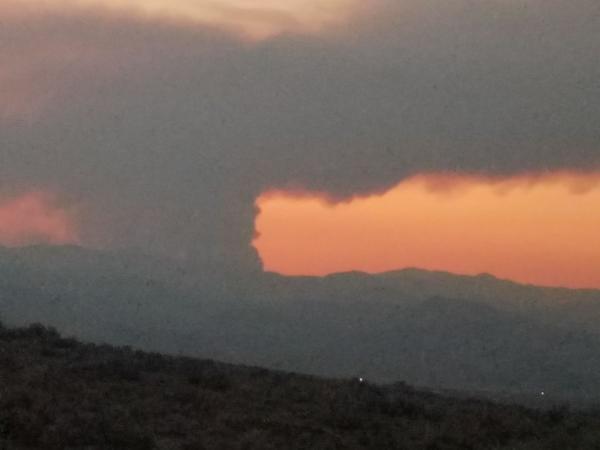
The 800 pound steer we call Snakebite charged and knocked Indiana intern Renae off of her feet, and proceeded to trample her. He had already had enough human interaction for a day, and it was payback time. The rope, freshly attached to his neck pushed him to his breaking point, and when he turned to see who was connected to the controlling end, Renae was immediately found with evidence in hand and deemed guilty.
He sprung into action, charged, and ran her down. It was a good thing he didn’t have horns; otherwise things could have gone quite differently for cowgirl on ground. Instead of goring her, he proceeded to pummel her into the dirt and rocks with strikes from his muzzle.
As Renae became one with the volcanic substrate at the brunt of raw steer power, instead of screaming, she laughed. She had never been knocked down by a cow before. Somehow, in her thrashing to get away, she managed to click him on the forehead with her cowboy boot. There. Tit for tat.
I wrote about Snakebite several weeks ago in this newsletter. We had been taking care of him up on the range after he nearly died from a rattlesnake bite. Every day, he’d stay in camp, in the “infirmary” a hotwire paddock with good grass and access to water. You’d think he’d be grateful to us for taking such good care of him, but I think he was actually kind of sick of us, and sick of watching his herd mates head out to graze every day. Maybe they talked trash to him when they got back. I don’t know. But I did know that Snakebite had escaped the infirmary and we had been unable to find him for two weeks.
And now there was a wildfire on the way; already we had moved camp and cattle down to our mid-elevation Little Hat Ranch to escape harm. But the fire had grown, and instead of 4 miles away, the fire now raged only a mile and a half from our grazing allotment boundary. With the right wind pattern, Snakebite could be barbeque pretty quickly. The fire fighters (there were now 460 on the remote Rabbit Foot fire) had their own weather forecasters; they had notified me with direct texts and emails to my phone the burn-area maps and projected winds for the upcoming weekend. By Saturday, there were 40 mile an hour winds predicted with scalding temps. Things could get bad in a hurry, and we needed everyone cleared out.
In my firefighting past, I had seen those conditions before, just 20 miles to the north in similar forest vegetation types. Fires gobbled up terrain and timber, and even timber fires could move 5 miles in an afternoon. There was no stopping them.
So, we spent this past week, among other things, trying to find and rescue the ungrateful Snakebite.
And possibly one more. It’s not easy to get a perfect count. As we were evacuating camp late last week, we lined the herd single file down the sinuous rocky trail that wound down Pig Creek to Little Hat Ranch, and Josh staged himself on the rocky hillside above. In the smoky dusk, the slowly moving thin black line of Angus beeves picked their way down the long trail out, and the cowhand ticked them off in his mind as they went by. It was perfect for cattle counting provided the counter didn’t lose focus (remember that counting sheep induces sleep). He thought we might be one short, but he wasn’t 100% sure.
We had a good hunch that the missing cattle were in the beaver swamps below old Camp 5, Beaver Camp. Renae got the ribeye steak for finding Snakebite on foot earlier in the week. The range crew that day managed to push him downhill closer to safety, but ran out of daylight before they could get him all the way down to the Little Hat Ranch where the rest of the herd was. He was still potentially in harm’s way, and now “brushed up” and not wanting anything more to do with horses, riders, or wranglers on foot.
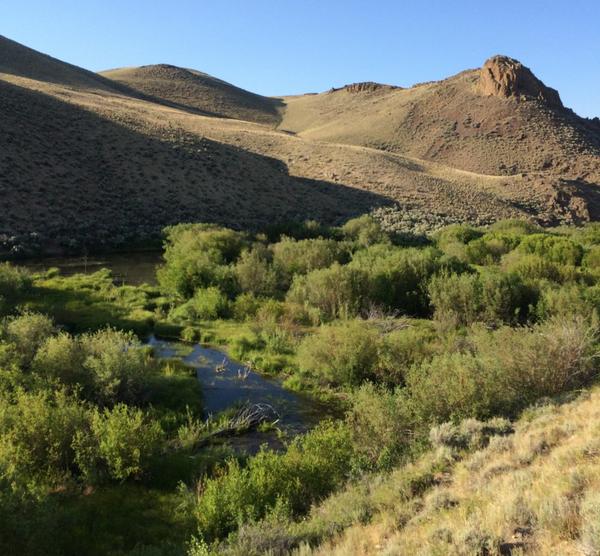
The next day I sent out part of the team to take monitoring photopoints ahead of the fire (and to watch for a potentially additional missing steer), and the other part to finish rescuing Snakebite.
My first crew didn’t do any photopoints, but they did find the missing steer, and brought it down to join the herd. Other than sweet little mare Ruby who got a bad cut and had to be walked back to the trailer and taken to the vet for stitches, they had a long but pretty uneventful day.
The second crew, consisting of Josh, Melanie and Renae, didn’t have it so easy.
They finally located Snakebite by midday. He was adamant that he wanted to stay in his willow and birch thicket hideaway. The crew made a plan: Josh would try to dig him out of the thicket on foot, and Melanie would drop a lariat over his head from her gelding, Gatto, and basically break him to lead on the 6 miles back to safety at Little Hat.
She rode in astride Gatto, and Josh amazingly cow whispered the steer right out into the open mountainside from the safe cover of the brush. The problem was in the approach; it was all steep rock and brush punctuated by ledges and small cliffs. In getting into position, Gatto lost his footing and slipped and slid down the slope, landing into a stand of chokecherry trees from above. In the near disaster, he winged a piece of flesh off his hind right leg; somehow, Melanie emerged unscathed.
Josh ended up looping the steer’s neck on foot, and handing the rope up to Melanie and the now erect Gatto. Melanie dallied to her saddle horn, but in the head high Big Basin Sagebrush, the untrained steer simply created havoc with the rope by artfully braiding it through the thick brush, and in the process, nearly clotheslined Renae with a neck-high rope.
After Renae had her little ground pounding encounter, the crew resorted to two-manning the rope, and choking him down as you would a Great Dane learning on a choke collar. Eight hundred pound steer finally got the message with two controlling his airway; he would retain slack. Josh got to where he could lead him as if he was a horse colt just figuring out the halter and lead rope.
And that’s how I saw them. I was working on a stream vegetation and habitat survey that documented our regenerative success in herding cattle away from sensitive creeks. The creek was far below them, and their movements caught my eye far above on the exposed mountainside on the Cherry Springs pack trail. The great distance muted the sounds of their movements, but their shapes were clearly silhouetted in the early evening sun: I spotted Josh in the lead, long lining the recalcitrant steer with about 20 feet of slack lariat between them; Melanie and Renae were horseback, most likely encouraging Snakebite with appropriate words from behind. They had spent the late afternoon taking turns leading Snakebite.
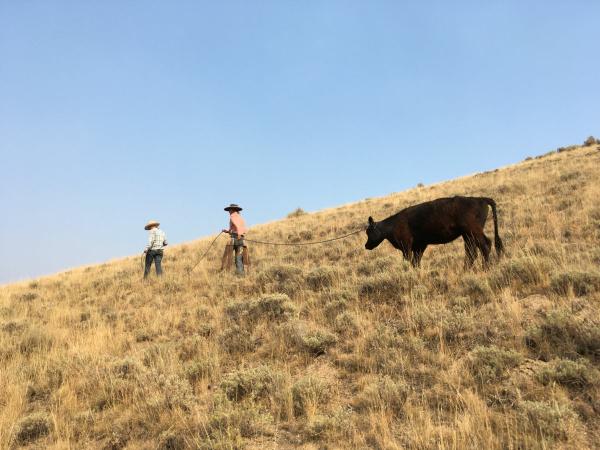
Josh’s horse Sable, the independent desert Arabian horse of a regal dynasty founded in ancient Sheikdom, appropriately wandered free, supervising them all (he’s the only Arab we have—and he knows it).
They would go nearly 4 miles further this way to the ranch. I figured they’d be there before it was completely dark.
I met up with them later as they neared the Little Hat Ranch and the rest of the rest of the Alderspring herd grazing the ranch. All was well. The other team was there with their charge already released with the herd and had helped walk Snakebite the last bit to the ranch. All that was left to do was loosen the limp rope loop around Snakebite’s Angus neck. I think Josh figured he was likely petting zoo tame at this point.
But Snakebite was still ungrateful. As Josh tried to lift the loose loop over the steer’s head, ‘Ol Snake charged Josh and tried to run him down to the ground and give him a friendly pummel into the dirt. Josh managed to “mostly stay on his feet” while getting rope wrapped around a tree to control the badly behaving bovine. At that point, cowboy was able to light finger the lariat loop and set Snake free. Steer delivered. Job complete.
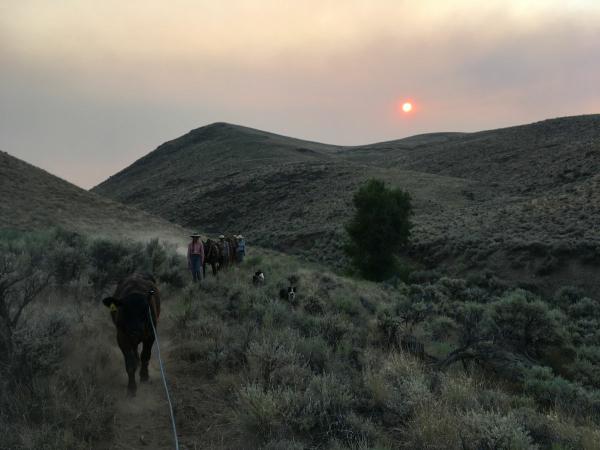
Both crews were quietly pulling their gear off their sweat stained horses at our Little Hat Ranch corrals and in the half light, I registered them as all trail dust caked and tired. Melanie quietly showed me Gatto’s wounds from his vaunt off the rocks (they were clean flesh wounds; he’d be fine), and after a few words, we all parted ways for the headlighted dirt track home. It would still be an hour or so before we got back to headquarters, where everyone would settle into getting some warm food in their bellies and looking to their bedrolls.
And no-one got really hurt except for dear mare Ruby who got a blood spurting artery cut in the middle of nowhere—a little silk scarf wrap and a long but quiet walk out to the closest stock trailer to bring her out for a night at the vet’s for stitches and a tetanus booster made her story another happy ending. She’s fine.
Some of these young people have never done this sort of stuff before. I am so proud of my crew. They’ve put in some long hot dusty days. I’ve never heard a word of complaint nor seen anything but can-do willing attitudes.
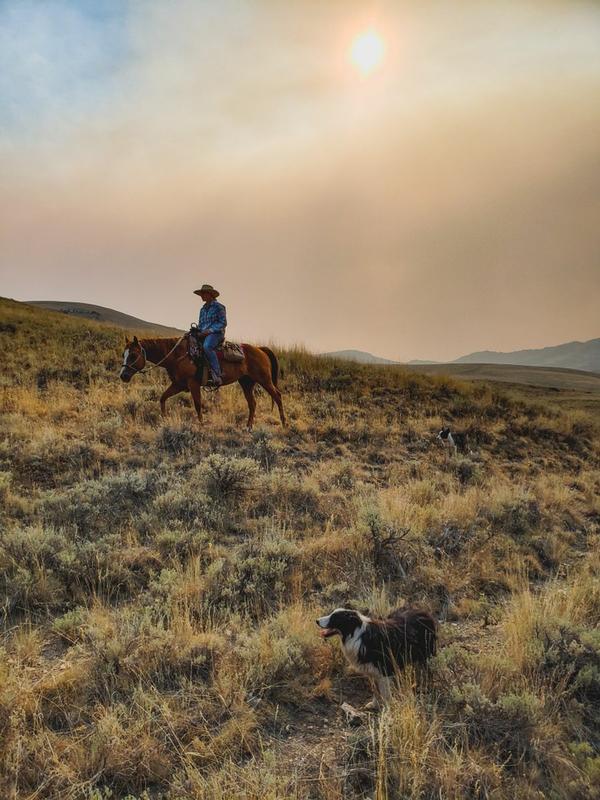 So, once again, good news: no beef barbecue on our watch, thank God. The cattle are all safe, as are the humans and horses on our team. We do have one pickup that decided to send its errant coolant fan through the radiator way up there, however, on a remote logging road as we trying to get our last cow camp evacuated (out of reach of a tow truck, as you could guess). Hopefully it won’t burn again; it already burned one time, but that is another story. And don’t you worry about it. It’s really not worth much. But it would sure be easier to fix it and drive it out instead of trying to get out a burned up hunk of metal.
So, once again, good news: no beef barbecue on our watch, thank God. The cattle are all safe, as are the humans and horses on our team. We do have one pickup that decided to send its errant coolant fan through the radiator way up there, however, on a remote logging road as we trying to get our last cow camp evacuated (out of reach of a tow truck, as you could guess). Hopefully it won’t burn again; it already burned one time, but that is another story. And don’t you worry about it. It’s really not worth much. But it would sure be easier to fix it and drive it out instead of trying to get out a burned up hunk of metal.
But everyone that matters, and 100% of the cattle we left the home ranch with this spring to start their summer journey into the Idaho wilds, are all safe. We are squared away, and able to watch the fury of fire gone wild at a safe distance, now 7500 acres strong, still raging behind the long ridge to the West. Thanks for your thoughts and prayers.
Happy Trails to you all.
Glenn, Caryl, Girls and Cowhands at Alderspring.

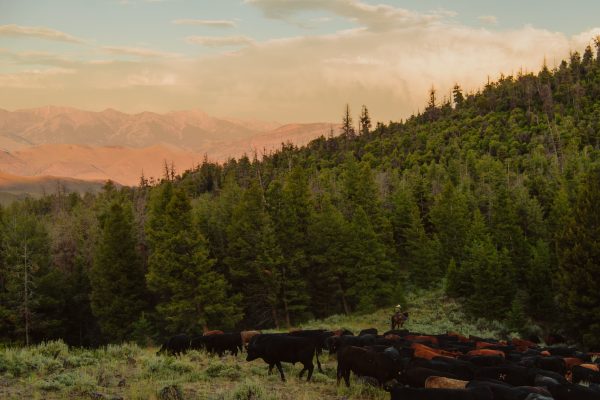
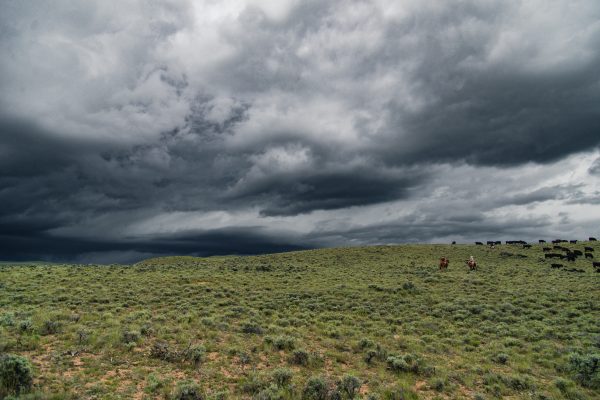


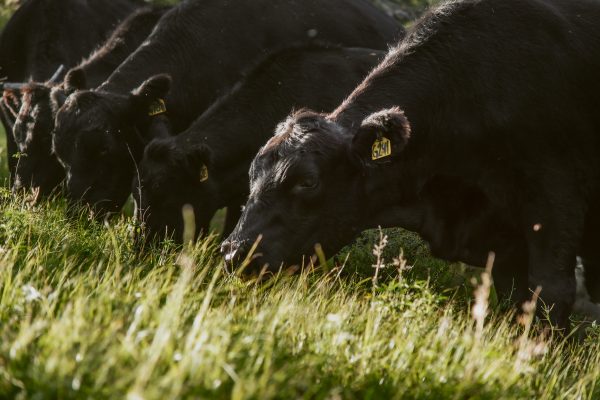

Leave a Reply